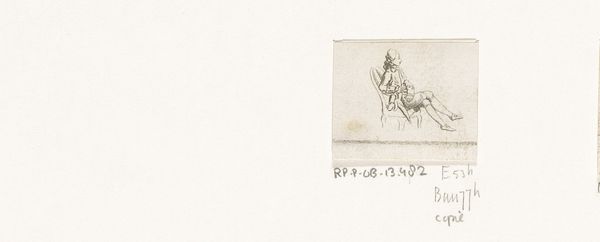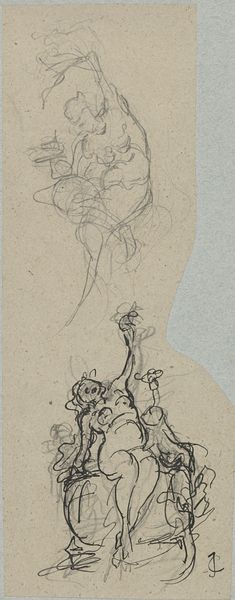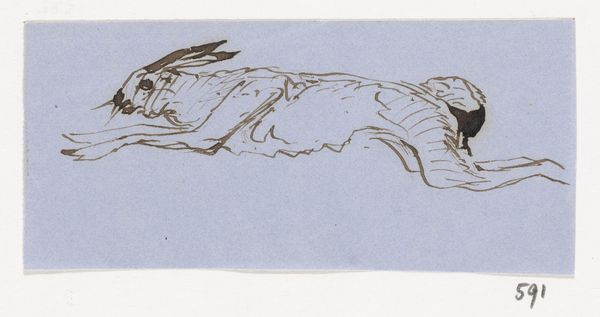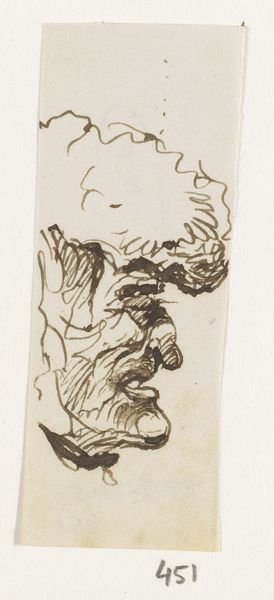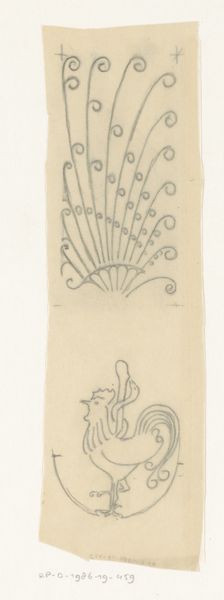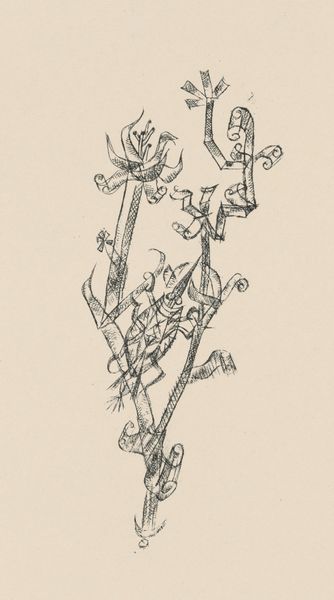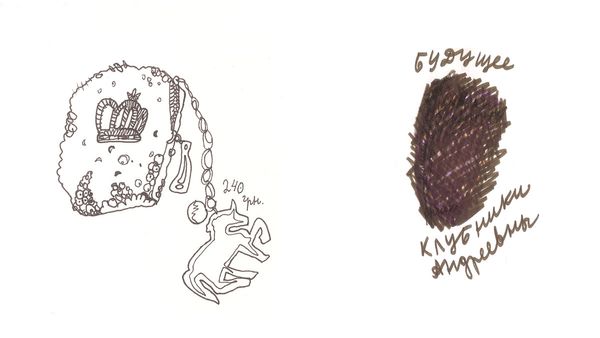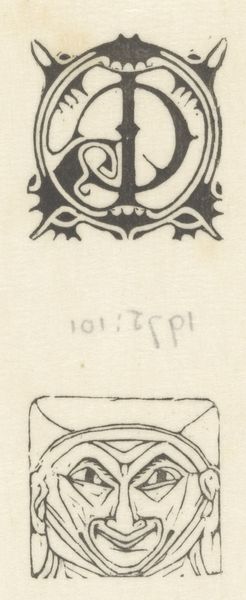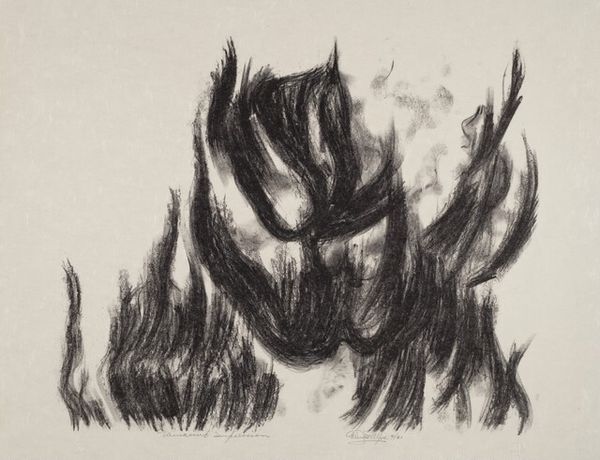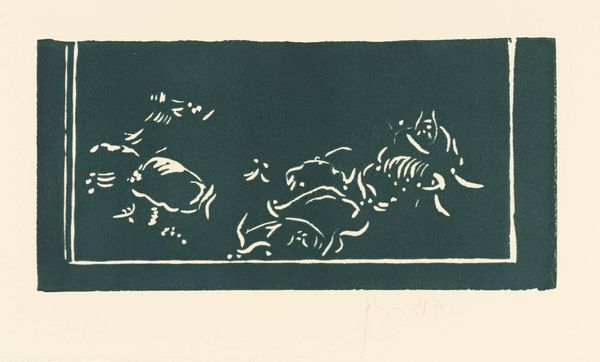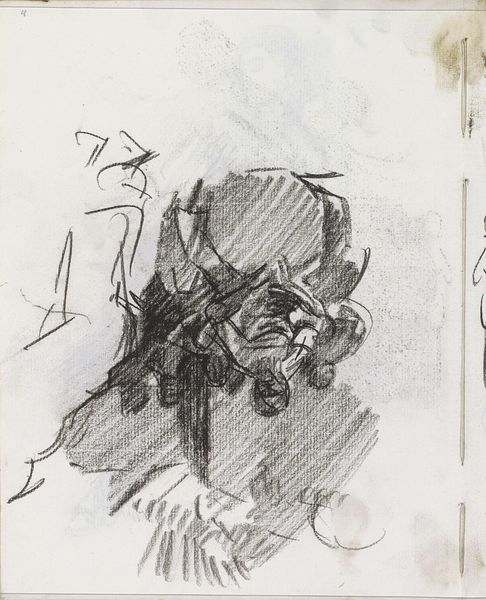
#
imaginative character sketch
#
light pencil work
#
pencil sketch
#
personal sketchbook
#
idea generation sketch
#
ink drawing experimentation
#
sketchbook drawing
#
pencil work
#
sketchbook art
#
fantasy sketch
Dimensions: height 34 mm, width 26 mm
Copyright: Rijks Museum: Open Domain
Curator: Here at the Rijksmuseum we have "Ornament met tulp", an anonymous sketch dating from around 1870 to 1937. Editor: I find it quite charming; there's a simple, almost stark beauty to its presentation, but it feels unfinished. It reminds me of something from a book of fairy tales, a black and white illustration perhaps. Curator: Right, the creation of preparatory drawings like these gives insight into the artist's process of planning and experimentation, with the aim of creating reproducible artworks for the consumer market. It illustrates the journey of the industrial production that defines much of art history. Editor: The choice of a tulip as a decorative motif isn't accidental, of course. The "tulip mania" in the 17th century signified a certain cultural moment. What does it mean to take a figure rooted in themes of economy and class and reproduce it as ornamentation? Who is afforded the privilege of consumption here? Curator: Exactly, considering these questions of class allows us to analyze the production and dissemination of images in the modern world. Editor: What are the historical contexts that influence artistic and consumer culture in the Netherlands? What about access to materials? I find myself asking who had the capacity to make or purchase something like this, when the cost of basic resources was high. Curator: You touch upon something key. This work also illustrates the transition from unique, handcrafted objects to mass-produced items that were affordable and could decorate middle-class homes. The rise of the printed image changed visual culture considerably, democratizing ornamentation, but at what cost for specialized artisans? Editor: And whose stories get lost in that democratization, right? We really have to think about these objects and question what’s being amplified, and what's being silenced, as images and their resulting power get transferred across different cultural strata. Curator: Indeed. Considering all the social and political elements intertwined with material is critical for a complete understanding of an object like this. Editor: By paying close attention to what, and more importantly, who is framed through it, a small sketch can provide much-needed insights into historical, economic and social dynamics.
Comments
No comments
Be the first to comment and join the conversation on the ultimate creative platform.


